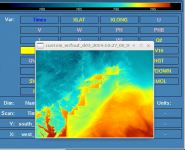Mike,
Based on your namelist.wps, I suppose you use ERA5 data as input to drive this case. Please let me know if I am wrong.
If you did use ERA5, I think that you didn't ungrib landsea data included in ERA5. Note that this is an important field that is used in interpolation of surface variables like SST, SOIL temperature and soil moisture etc.
If you have access to ERA5 data arrived in NCAR, the file below gives the landsea mask information for ERA5:
https://rda.ucar.edu/datasets/ds630.0/, where please find the datafile
e5.oper.invariant.128_172_lsm.regn320sc.2016010100_2016010100.grb

